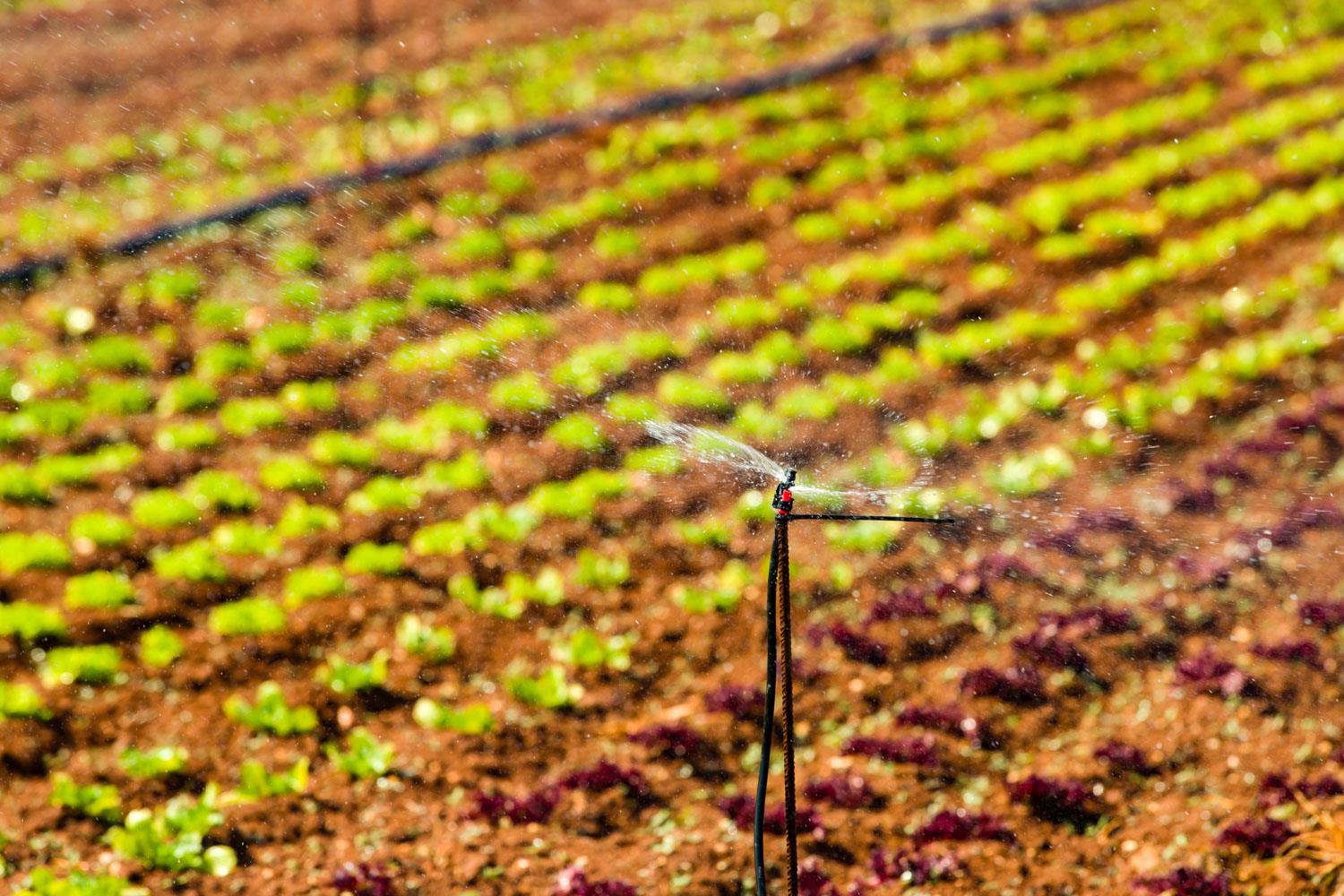Digitising Open-Field Vegetables
Deploying drones, satellites and IoT devices to figure out the right harvesting time and discover weed patches, thereby enhancing the production of organic open-field vegetables.

Concept
The objective of this Flagship Innovation Experiment (FIE) is to monitor and optimise the production of organic open field vegetables. In general open-field agriculture is challenging due to ever-changing environmental factors. This FIE improves the efficiency of agricultural operations whilst at the same time reducing the environmental impact by mitigating resource inputs such as water, fertilisers or biopesticides.
Innovative technologies like satellites or drones are deployed to determine the optimum harvesting time or to identify weed patches and are used in combination with Internet of Things (IoT) devices in order to measure atmospheric as well as soil conditions. Subsequently, all these collected data are processed in cloud infrastructure to provide farmers with a Decision Support System (DSS) and management models, alleviating production losses caused by pests, diseases and infestations. In addition, information is integrated into the certification and traceability process for organic vegetable producers in order to add supplementary value to the final product. This ultimately raises consumers’ awareness of the quality of vegetable production.
Implementation
This FIE consist of 3 individual but strongly interconnected experiments:
1) Application of artificial intelligence (AI) for automatic weed detection.
2) Maturity and yield detection through multispectral UAV imagery. Images were collected with drone flights.
3) Development of agronomical models for optimal irrigation, fertilization and organic pest management.
The FIE was implemented in a total of 4 experimental parcels in Marathon, Greece, which were generally small-sized (approx. 1 ha), in order to prioritize efficient management and differentiation of operation in each zone.
Within our FIE's lifetime, we have successfully completed two rounds of development and piloting trials for our predictive models, while we have successfully integrated all of our services on a common cloud-based platform.
Lessons Learnt
SmartAgriHubs supports knowledge transfer across the network. The methodology used in other Flagship Innovation Experiments can be observed and optimized.
Open-field experiments are challenging. The single most important lesson learned is that, in an open-field experiment, careful planning is of utmost importance, due to the sheer number of factors that can interfere with the experiment's activities. The only viable strategy is to have already planned for as many things as possible, to eliminate potential delays that can often be critical for the whole experiment.
Adapting to the weather. Especially during the first months of the FIE, several difficulties such as the extreme wind speeds, made UAV flights very challenging in the open fields, while environmental parameters, such as the near all-time-high rainfall recorded during certain days of autumn 2019, made cultivation practices very effortful. During measurement days with extreme wind conditions, a larger more robust UAV system with the same multispectral camera was used to perform flights instead of the normal DJI Phantom 4 UAV, to avoid risking potential damage to the equipment.
Targeted demonstration sessions. In the future, what we would pay more attention to, is to separate certain demonstration events based on the background of the targeted audience, i.e. a separate event for farmers and a different one for agri-tech companies or agronomists. This way, the presentations and demonstrations can be focused and more targeted based on the expected knowledge and background of the attendees.

